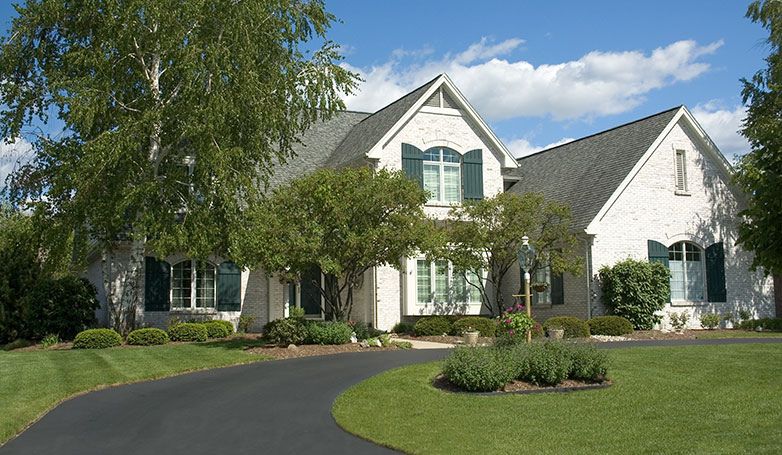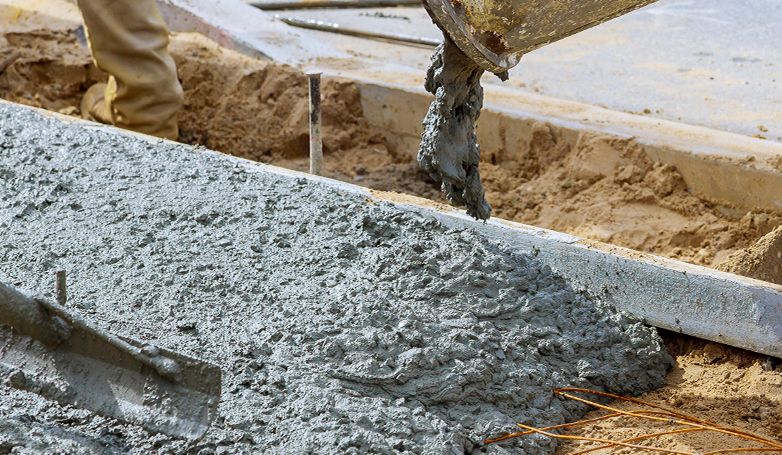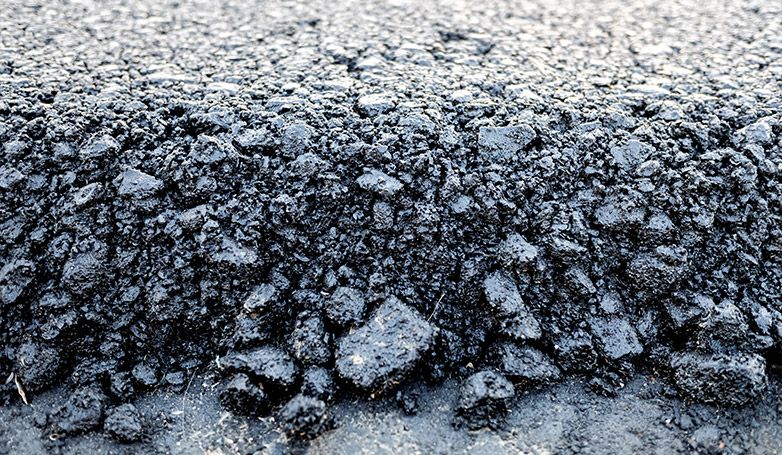Best Concrete Patch – 10 Top Picks for Durable Repairs
In pursuit of the best concrete patch for your driveway? You’re in the right place. Concrete, while robust, is prone to cracking. A quality concrete patch is key to restoring its strength and appearance.
The best concrete patches offer a comprehensive solution to driveway cracks, ensuring long-term durability. These products excel in adhesive strength and can withstand heavy traffic, crucial for maintaining driveway integrity. They come in various forms, like self-leveling compounds for flat surfaces and specialized grouts for vertical repairs. Their advanced formulations, often including hydraulic cement, effectively prevent water infiltration, thus reinforcing the structural soundness of your driveway.
Join us as we delve into the top concrete patch options available. Our guide covers everything from selecting the right product to detailed application techniques. Gear up for an efficient repair process and welcome back a driveway that’s not only structurally sound but also aesthetically pleasing.
The 10 Best Concrete Patch Products
Here are our best concrete repair products on the market. These patches were carefully selected based on consumer feedback, performance, durability, and convenience of use. Use the best concrete patch to restore your damaged concrete surfaces and create pristine surfaces.
1. Quikrete Concrete Patching Compound
This product is a renowned and dependable option for concrete patching. Quikrete has made a name for itself as the go-to product for seamless repairs. They offer a strong and long-lasting remedy for cracks, spalls, and other flaws.
2. Sika Concrete Fix
Sika Concrete Fix is a brand that experts recognize for concrete repairs. The cutting-edge formulation and successful track record show that Sika produces concrete repair products of the highest caliber.
3. Quikrete Vinyl Concrete Patcher
Quikrete has made a name for itself as the go-to product for seamless repairs. We can always rely on its remarkable performance and ease of application. This compound offers a powerful and long-lasting remedy for surface irregularities.
4. Sakrete Top’n Bond Concrete Patcher
This premium patching compound is the go-to option for contractors and industry professionals. Sakrete Top’n Bond patcher is built to offer exceptional adhesion, strength, and longevity.
5. Rust-Oleum EpoxyShield Concrete Patch and Repair
This patch firmly adheres to the pre-existing concrete to form a surface that is sturdy and flawless. Rust-Oleum EpoxyShield Patch is the best concrete patch for surfaces that handle heavy foot traffic, vehicle loads, and inclement weather.
6. DAP Concrete Patch
This patching material has outstanding adhesive qualities that enable it to stick firmly to different concrete surfaces. It creates a solid connection that is impenetrable to peeling, cracking, and crumbling.
7. Roadware 10-Minute Concrete Mender
The Roadware 10-Minute Concrete Mender is the best concrete patch for holes that need to be fixed quickly and durably. With the help of this ground-breaking innovation, you can repair damaged concrete surfaces while minimizing downtime.
8. Akona Concrete Bonding Additive
Akona Concrete Bonding Additive is a game-changer. It is designed to enhance the bonding capabilities of cementitious mixes. With this additive, you can achieve reliable and long-lasting concrete repairs that withstand the test of time.
9. Henry 345 Premixed Patch and Leveler
Henry 345 Premixed Patch and Leveller is the best concrete repair product for patching and leveling uneven concrete surfaces. They give a smooth and level finish on a range of indoor and external concrete surfaces. Henry 345 produces excellent results when filling low spots, patching gaps, or prepping a surface for flooring installation.
10. PC-Concrete Two-Part Epoxy Adhesive Paste
This high-performance epoxy adhesive paste is designed to bond, repair, and restore concrete surfaces with unparalleled strength and long-lasting results. They fix cracks, anchor bolts, and patch concrete that withstand the toughest conditions.
The Best 5 Specific Concrete Repair Products
Each product offers advantages that address various repair needs. Select the ideal option for your particular project with confidence with the help of this list.
1. Garage floor
- Quikrete FastSet Concrete Crack Repair
- DAP Concrete Patch
- PC-Masonry™ Concrete Epoxy Adhesive Paste
- Sika Concrete Repair Mortar
- Rust-Oleum RockSolid Concrete Patch
2. Driveway
- Quikrete FastSet Concrete Crack Repair
- PC-Masonry™ Concrete Epoxy Adhesive Paste
- Sika Concrete Repair Mortar
- Rust-Oleum RockSolid Concrete Patch
- Sakrete Top’n Bond Concrete Patcher
3. Large holes

- Quikrete FastSet Concrete Crack Repair
- PC-Masonry™ Concrete Epoxy Adhesive Paste
- Sika Concrete Repair Mortar
- Rust-Oleum RockSolid Concrete Patch
- Roadware 10-Minute Concrete Mender
4. Pool deck
- Quikrete FastSet Concrete Crack Repair
- Sika Concrete Repair Mortar
- Rust-Oleum RockSolid Concrete Patch
- Sakrete Top’n Bond Concrete Patcher
- Roadware 10-Minute Concrete Mender
5. Vertical Surfaces
- PC-Masonry™ Concrete Epoxy Adhesive Paste
- Sika Concrete Fix
- Rust-Oleum EpoxyShield Concrete Patch and Repair
- Roadware 10-Minute Concrete Mender
- Akona Concrete Bonding Additive
How to Choose the Best Concrete Patch

Selecting the right concrete patch is crucial for ensuring effective and durable repairs. To make an informed decision, consider the following key factors in evaluating and choosing the best concrete patch for your specific needs.
Understanding the Scope of the Damage
Before choosing the best concrete patch, assess the damage extent on your concrete surface. Whether it’s a small crack, a large hole, or spalling, understanding the scope helps in selecting the right patching material. This step is crucial as different products are formulated for specific types of damage.
Evaluating Curing Time and Weather Conditions
Consider the curing time of the patch. Some products may take longer to set, which could delay your project. Additionally, factor in the weather conditions during application and curing. Extreme temperatures can affect the curing process and the final outcome.
Reading the Label for Maximum Thickness
Pay close attention to the label instructions, especially the recommended maximum thickness for application. Over-thick applications can lead to poor adhesion and ineffective repairs. The label also provides crucial information on the ideal conditions and surfaces for the product.
Compatibility with Surface Preparations
Ensure the patch is compatible with any surface preparation you’ve done. Different patches require different pre-treatments like scrubbing, roughening, or priming. Incompatibility between the surface preparation and the patch can result in weak bonding and subpar repair quality.
Leveraging Client Feedback and Rankings
Finally, utilize client feedback and product rankings to inform your decision. Real-world experiences and reviews offer valuable insights into a product’s effectiveness and reliability. They can help you gauge the success rate of different concrete patches in similar repair scenarios.
Types of Concrete Patch
The best concrete patch materials come in a variety of forms, each with specific qualities and suggested uses. The most common varieties are:
Cement-Based Patch

This concrete patch is the most common and traditional. The mix comprises cement, sand, and occasionally additives for better adhesion and workability. They work impressively on tiny to medium-sized cracks, spalls, and surface flaws.
Epoxy Patch
Epoxy-based patches have exceptional durability and bonding properties. These patches are perfect for larger cracks, deep spalls, and areas exposed to chemicals or heavy traffic. Pros admit this is the best concrete repair product to use if you seek superior strength and resistance to chemicals and moisture.
Polymer-Modified Patch
Polymer additives improve the flexibility, adhesion, and crack resistance of cement. They are instrumental in locations that move easily, like joints in concrete or uneven surfaces.
Self-Leveling Patch
Self-leveling patches flow and level themselves to create a smooth and even surface. They provide you with a flat and level foundation for flooring applications. They come in handy when you need to restore uneven or deteriorating concrete floors.
Fast-Setting Patch
Fast-setting patches dry quickly, enabling quick repairs. They are employed in urgent tasks and are often epoxy- or cement-based.
Preparation Method

Effective preparation is the foundation for successful concrete repairs. To achieve optimal results, follow these key steps in the preparation process, ensuring a clean, well-defined, and appropriately roughened surface for the application of the concrete patch.
Thorough Cleaning of the Damaged Area
Initiate the preparation by meticulously cleaning the damaged area. Remove all dirt, debris, and loose particles from the surface. A thoroughly cleaned substrate is crucial for the patching material to adhere effectively. Use a pressure washer or a stiff brush for optimal cleaning results.
Defining the Repair Area
Carefully delineate the area that requires repair. Use masking tape or a chalk line to create distinct borders around the damaged concrete. This step is vital for concentrating the patching efforts and ensuring a robust bond between the new material and the existing concrete.
Roughening the Surface for Enhanced Adhesion
Increase the surface roughness to improve the patch material’s grip. This can be achieved using a wire brush, a grinding tool, or even sandblasting, depending on the extent of the damage. After roughening, thoroughly clean the area again to remove any resultant debris, ensuring a pristine surface for the patch.
Secondary Cleaning for a Pristine Surface
Conduct a final cleaning to eliminate any residual dust or particles. Employ a shop vacuum, brush, or even a blower to ensure the area is impeccably clean. This step is essential to prevent any impediments to the patch material’s adherence.
Application of a Bonding Agent When Required
In cases where the chosen patch material recommends a bonding agent, apply it according to the manufacturer’s instructions. Ensure even coverage and allow the agent to dry for the specified duration. This step enhances the adhesion of the patch material, leading to a more durable and lasting repair.
Ratio Cost/Durability

Basic cement-based patches are less expensive than high-quality alternatives like epoxy-based or polymer-modified patches. If cost is a major concern, choosing a cement-based repair is your best bet.
Cement-based patches, however, might not give you the long-term durability of the more sophisticated patching materials. Higher-quality patch materials can be more durable and require fewer repairs in the future.
Application
The application procedure for concrete patching differs for every patch type. However, we have provided you with a general outline of the application procedure:
- Prepare the patch material according to the manufacturer’s instructions. This could entail combining pre-packaged components, mixing ingredients, or adding water or activators.
- Apply the repair material to the cleaned and prepared surface using a trowel or putty knife. Fill any gaps and get good adhesion with the old concrete. Make the surface slick and level with the concrete around it.
- Remove air bubbles from the patch material by lightly vibrating the surface.
- Adhere to the curing time and methods recommended by the manufacturer.
- Quickly clean the tools and equipment used for patching before the patch compounds harden.
- Paint over the area, if you, please.
How to Preserve Your Concrete Patch Repair

Preserving the longevity and effectiveness of your concrete patch repair involves thoughtful care and maintenance. Here are essential steps to follow after application, ensuring the durability and appearance of your repaired concrete surface
Minimize Traffic on Fresh Patches
After applying a concrete patch, it’s crucial to allow it ample time to set and cure. Avoid walking or driving over the freshly patched area. This is especially important in the first 24-48 hours post-application, as premature pressure can compromise the integrity of the repair.
Application of Concrete Sealer for Longevity
To extend the lifespan of your concrete patch repair, consider applying a high-quality concrete sealer. A sealer acts as a protective layer, shielding the patch from moisture, UV rays, and chemical spills. This not only preserves the patch but also maintains the overall appearance of your concrete surface.
Maintaining a Clean Patched Surface
Regular cleaning of the patched area is essential to prevent the accumulation of dirt and debris, which can lead to staining and gradual deterioration. Gentle sweeping and occasional rinsing with water are typically sufficient to keep the area clean.
Gentle Cleaning Techniques
When cleaning your patched concrete surface, use non-aggressive methods. Harsh chemicals or abrasive tools can damage the patch and surrounding concrete. Instead, opt for mild detergents, soft brushes, or mops. If using a pressure washer, maintain a low-pressure setting to avoid eroding the patch and the concrete’s surface.
Routine Inspection and Maintenance
Periodically inspect the patched area for any signs of wear or damage. Addressing small issues promptly can prevent more significant problems in the future. This includes filling any new cracks that appear, reapplying sealer as needed, and ensuring that drainage around the area is adequate to avoid water pooling.
By following these enhanced guidelines, you can ensure that your best concrete patch repair remains intact and effective for a longer period, thereby maintaining the structural integrity and aesthetic appeal of your concrete surfaces.
Conclusion
Having the appropriate concrete filler makes all the difference in getting long-lasting, high-quality concrete restoration. We have explored all the best concrete patches that have demonstrated their efficacy. And we are confident you will invest in high-quality concrete repair supplies in the future.


